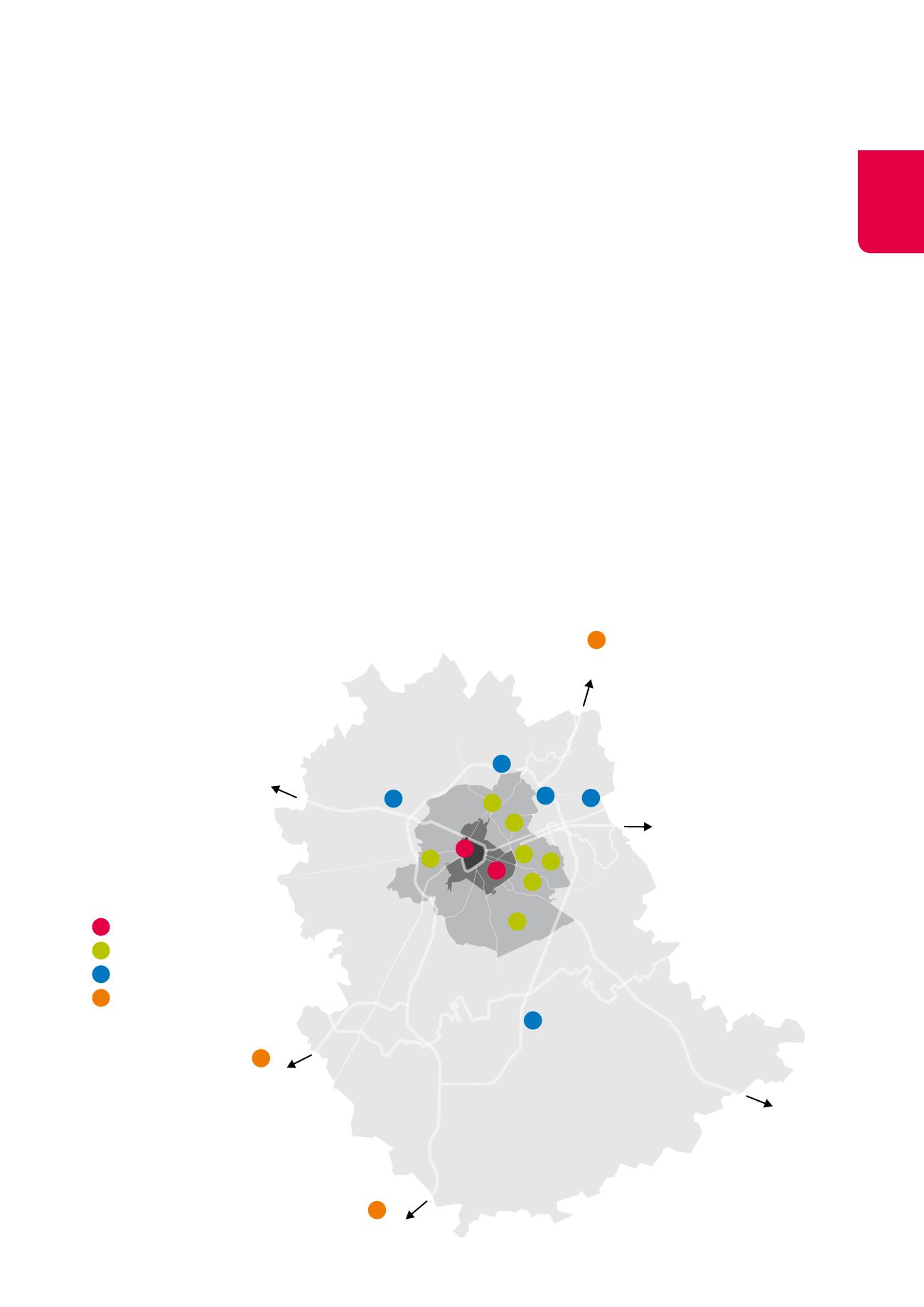

1
1
3
3
3
7
2
12
6
6
6
4
2
15
1
10
1
GRIMBERGEN
ASSE
BEERSEL
HALLE
ITTRE
NIVELLES
OTTIGNIES
WAVRE
OVERIJSE
TERVUREN
BRUSSELS
E40
GHENT/
OOSTENDE
E19
ANTWERP
E19
CHARLEROI
A8
TOURNAI
E411
LUXEMBURG
VILVORDE
LEOPOLD
GROOT-
BIJGAARDEN
WATERLOO
BRAINE-L’ALLEUD
DIEGEM
ZAVENTEM
E40
LIEGE/LEUVEN
Market characteristics
The Brussels office market
Sources: CBRE, DTZ, JonesLangLasalle.
Subsegments of the Brussels office market
The Brussels office market has several subsegments. The first four
are often referred to collectively as the Central Business District
(CBD).
Brussels Centre:
the historic city centre
Occupants: Belgian public authorities and medium-sized to large
Belgian private companies.
Leopold District:
the European district of the city
Occupants: European institutions and delegations or associations
collaborating with them.
Brussels North:
business district
Occupants: Belgian and regional public authorities, semi-public
companies and large private companies.
Louise District:
prestigious district
Occupants: law firms, embassies and medium-sized private
companies.
Decentralised Brussels:
the remainder of the 19 municipalities of
the Brussels Capital Region
Occupants: medium-sized to large private companies.
Brussels Periphery & Satellites:
area just outside the Brussels
Capital Region and the Ring
Occupants: private companies of all sizes.
The office rental market in Brussels
Demand
Despite a few hesitant signs of recovery, demand on the Brussels
real estate market reached just 404,000m² in 2014. This level is well
below the average take-up of 500,000m² per year recorded before
the financial crisis.
The public sector accounted for 45% of total rental demand. It was
responsible for the three most important transactions of 2014: the
letting of 46,000m² on the Tour & Taxis site (Brussels North) by the
Flemish Government, that of 36,000m² in the Astro Tower building
(Leopold District) by Actiris (Brussels employment administration)
and that of 17,000m² in Cofinimmo’s Livingstone II building (Leopold
District) by the European Commission. Private sector demand
mainly stems from renegotiations, as occupants whose lease
is due for renewal seize the opportunity to improve their rental
conditions.
More than 25% of rental demand was concentrated in the Leopold
District. A major influence on this trend are the leases by Actiris and
the European Commission mentioned above.
x
x
x
x
Central Business District
Decentralised
Periphery & Satellites
Other
(x = number of properties)
85

















